
Note: The post-surgical strategies mentioned in this article are intended for and applicable to those individuals who have moved beyond the acute (i.e., initial) phase of their recovery. Any post-surgical pain must have subsided before implementing many of these recovery techniques.
A lot of folks write in with questions about foot and toe surgery and what alternatives might be available for those who wish to avoid these procedures. We also get a lot of questions from people who've already had foot or toe surgery (or who are scheduled for a procedure), wondering if natural foot care methods might be effective in preventing a recurrence of their problem.
Some folks wonder, too, how they can speed healing and recover their foot strength and flexibility after surgery. It’s impossible for us to make specific recommendations for each person without the benefit of a full health history interview and physical examination, but we can offer a few helpful thoughts and suggestions about these topics. This article is intended to present general information about the post-surgical recovery process and how a more natural approach may be helpful in rehabilitating the foot and achieving optimal long-term foot health.
Post-Surgical Effects

Surgical procedures—including foot and toe procedures—are major health events that come with an inherent set of risks. Some of the most common foot and toe surgeries include bunionectomies, osteotomies, cheilectomies, neurectomies, and plantar fascia release. These procedures are intended to fix long-term foot and toe problems in a meaningful way, though in some cases these procedures may not have a permanent and positive effect. These procedures may also result in unexpected side effects that negate any potential foot health gains, or they may require a lengthy rehabilitation process that may or may not result in a desirable outcome.
Scar tissue, reduced mobility, pain, and other problems can all occur after foot and toe procedures. What’s even worse, though, is that the same foot problem that led to the surgery in the first place may recur—a common phenomenon among those who undergo foot and toe surgery. Another inherent problem with foot surgery is that it typically requires a patient to stay off his or her feet for a prolonged period—something that's nearly impossible for many people, given the realities of work and home lives. Insufficient rest can lead to improper healing. By the same token, all that immobility means that there’s a lot of work and time required, later on, to restore foot strength and flexibility.

In some cases, surgery is indeed the most effective way to deal with a foot problem, particularly a severe one, and also in the case of certain congenital anomalies. We at Natural Footgear are not anti-surgery, but we feel that surgery is an invasive treatment approach that’s used far too often, especially when natural, conservative alternatives exist that have helped many people recover from their chronic foot problems.
So, in some cases, foot and toe surgery is indeed warranted, but it's important to know that, in most cases, surgery does not address the true underlying cause of foot and toe problems: Conventional footwear. A post-surgical patient who continues to use footwear that possesses injurious design features may well suffer a recurrence of his or her original problem. The health habits a person forms following foot and toe surgery can have a profound and lasting effect on his or her body, and the decision about how to rehabilitate the foot may be the difference between realizing optimal foot health and making another trip to the surgeon.
Don’t Lose Hope!

Some people who undergo foot and toe surgery find the recovery process long, arduous, and (in some cases) demoralizing, especially if the problem crops back up. If you or somebody you know has undergone foot or toe surgery and is feeling a sense of despair, we’d like to say: Don't lose hope! Proper post-surgical foot care can aid the rehabilitation and recovery process and help ensure that problems don’t arise again. Indeed, even after having surgery there is still a lot you can do to build and preserve natural foot health and regain foot strength and function.
We offer several post-surgical foot care strategies below that we’ve seen work for people in the past. Please bear in mind that every person is unique, and what works for one person may not work for someone else. The important thing to remember is that true foot rehabilitation takes time and persistence; how a person approaches the recovery process will either complement the surgical procedure (leading to lasting beneficial results) or reinforce the circumstances that led to the procedure in the first place.
Six Helpful Strategies
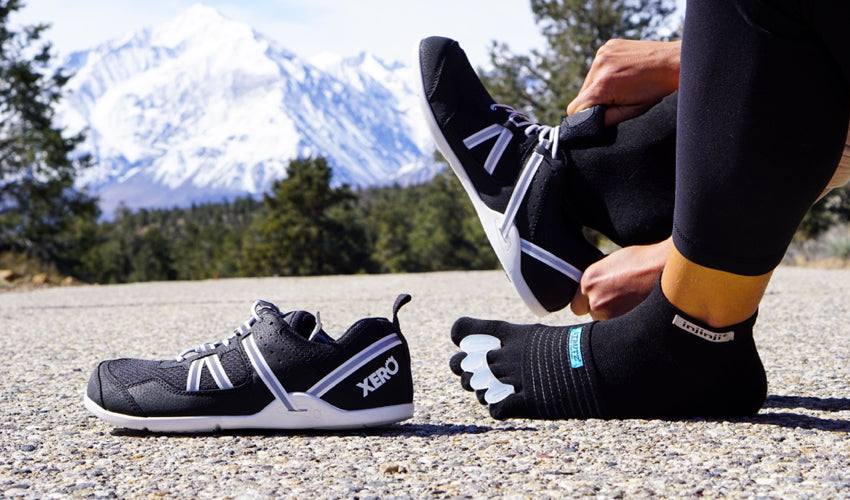
A natural approach to foot and toe post-surgical recovery respects normal foot anatomy and encourages rehabilitation, not only from the surgery itself but also from the decades of tissue changes instigated by conventional footwear and its many injurious design features. Post-surgical natural foot care involves taking active steps toward recovery and forming key foot health habits. It also sometimes involves making tough decisions about what a person puts on his or her feet. Here are the six methods that, in our experience, we’ve found most helpful in building and maintaining optimal foot and toe health after surgery:
- Avoid offending footwear
- Use Correct Toes and other helpful footgear
- Engage in weight-bearing activity
- Perform mobility exercises
- Seek out complementary therapies
- Practice good foot health hygiene
Let's dig into each of these methods a bit more.
1. Avoid Offending Footwear
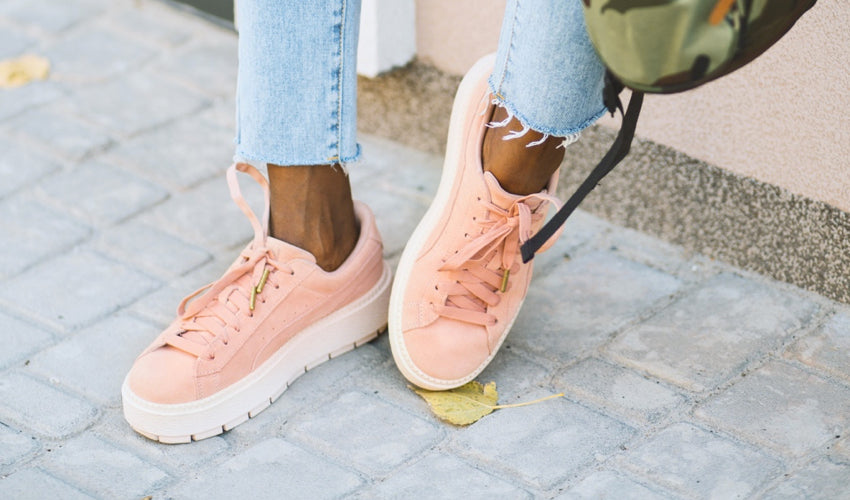
Making a conscious decision to avoid conventional footwear is the most important consideration in restoring foot and toe health following surgery. For many people, the continued use of conventional footwear (i.e., shoes that possess heel elevation, toe spring, toe taper, and rigid, inflexible soles) after surgery encourages a recurrence of the original problem, be it a neuroma, a hammertoe, or a bunion. Removing the forces that caused these problems in the first place (e.g., pinching, stretching, and constriction forces on the toes) is an extremely powerful way to ensure that these problems do not arise again and that the surgical procedure performed is the last of its kind ever required.

Indeed, choosing footwear wisely is a potent method of foot and toe rehabilitation. In our experience, this action (along with the info contained in strategy No. 2 below) is crucial in determining the true, long-term success of post-surgical recovery. All the men's and women's footwear options we feature on the Natural Footgear site respect normal and natural foot and toe anatomy and can be helpful in rehabilitating the foot to the way nature intended.
SHOP MEN'S FOOTWEAR SHOP WOMEN'S FOOTWEAR
2. Use Correct Toes & Other Helpful Footgear
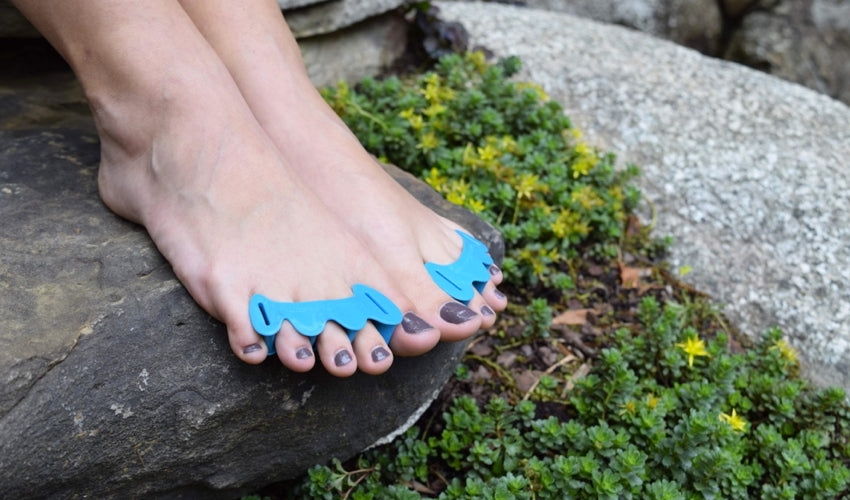
After surgery, especially toe surgery, there is a window of opportunity for many people to encourage optimal toe orientation and alignment, to allow the toes to regain their natural look and shape (i.e., straight and splayed well apart). Correct Toes is an amazing tool that helps realign the toes to the position that nature intended and can help a person take maximum advantage of this important post-surgical window of opportunity.
SHOP CORRECT TOES
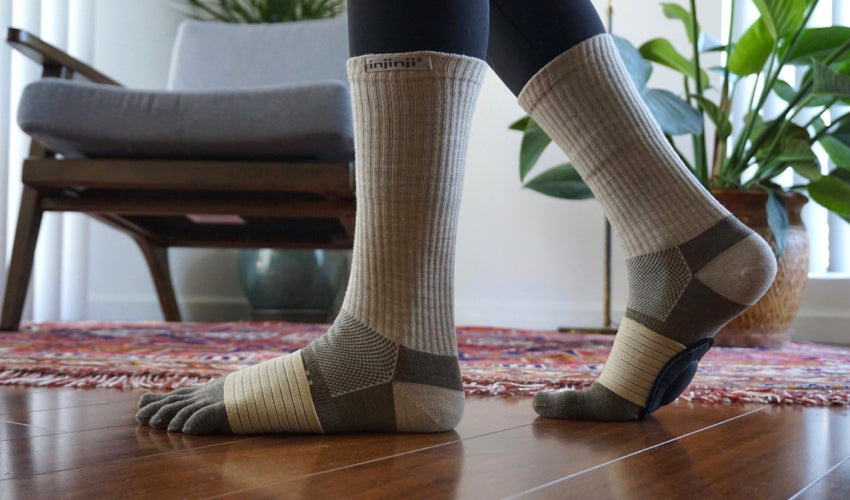
Toe socks and metatarsal pads are other helpful natural footgear in rehabilitating the foot after surgery. Toe socks eliminate constriction forces on the toes, and metatarsal pads help restore proper toe flexor and extensor tendon balance while repositioning the forefoot fat pad to a location that cushions and supports the heads of the metatarsal bones (i.e., the ball of the foot).
SHOP INJINJI TOE SOCKS SHOP PEDAG METATARSAL PADS SHOP STRUTZ PRO FOOT PADS

Tuli's heel cups are another simple and effective foot pad that offers unobtrusive cushioning to the heel, and they can be particularly helpful for individuals recovering from foot surgery or for those transitioning from conventional footwear to more minimalist footwear.
SHOP TULI'S HEEL CUPS
3. Engage in Weight-Bearing Activity
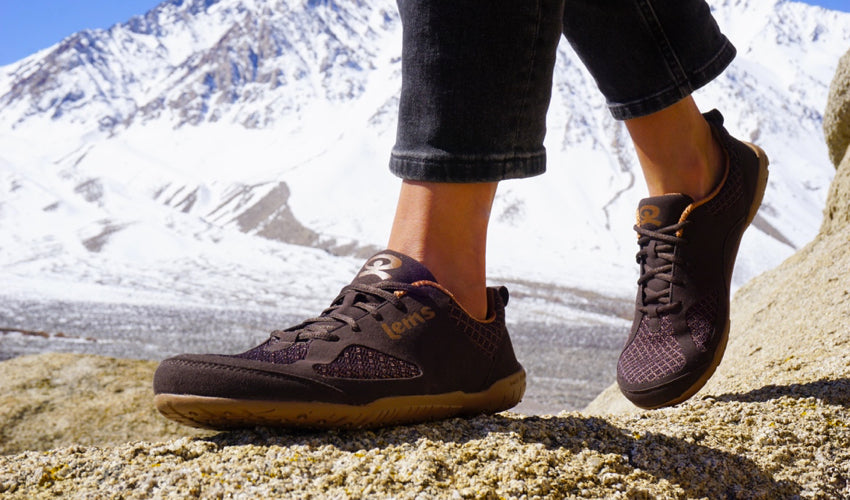
After a person has sufficiently recovered from his or her surgery, participating in weight-bearing activity (e.g., walking, running, etc.) can be a profoundly helpful way to restore normal foot shape and rehabilitate the feet ... if this activity is performed with the foot and toes in a proper configuration. Points No. 1 and 2 above highlight the importance of using footgear that respects normal and natural foot shape and anatomy, and the use of this gear becomes even more important with activities like walking and running, which involve large and persistent forces applied through the joints and tissues of the foot and toes.
Another option is to practice barefoot walking on forgiving surfaces (we prefer indoor tracks or hard-packed sand on the beach, as you can see if there is any debris or sharp objects in your path); doing so awakens previously near-dormant intrinsic foot muscles, improves overall foot strength, and helps restore medial longitudinal arch (i.e., the main foot arch) shape and function. Adopting thin, flexible, and textured Naboso insoles is another way to assist the foot rehabilitation process and can help enhance balance, posture, agility, and general foot/body awareness.
SHOP NABOSO INSOLES
4. Perform Mobility Exercises

Certain exercises can be extremely helpful in building and preserving joint and tissue mobility in the foot and toes following surgery. Mobility is an important consideration after surgery, because it can be lost without timely intervention. Lost mobility (especially in a key body part such as the foot) can have long-term implications on a person's ability to perform his or her preferred recreational activities or even activities of daily living. Some of our favorite exercises for improving foot and toe health and mobility include the following:
For the ball rolling exercise listed above, we have found the Naboso Neuro Ball to be particularly helpful.
SHOP NABOSO NEURO BALL
5. Seek Out Helpful Complementary Therapies

Receiving ongoing care from talented and compassionate complementary alternative medicine (CAM) practitioners or other providers can be an important part of foot care moving forward after surgery. Various physical therapy modalities, chiropractic techniques such as Graston, massage therapy, pilates, and yoga all have something unique to offer the post-surgical patient. Whether it’s improving joint mobility and tissue tone or helping resolve surgery-related scar tissue, these manual therapies are ideal for patients who have moved past the initial stage of their recovery and can tolerate the stimuli from hands, tools, or other equipment used by the practitioner (or the exercises and stretches that a yoga or pilates instructor might recommend).
6. Practice Good Foot Health Hygiene

Maintaining proper foot hygiene is another important way to restore foot health after surgery, and it's an important health habit that all people (post-surgical patients or otherwise) should consider. Good foot health hygiene involves the following: Monitoring/inspecting the foot and toes for cuts, bruises, ingrown toenails, etc. (an especially important consideration for diabetics); keeping nails trimmed and in good shape; using soaks and other helpful foot care products (including pain-relieving cream and medicated cream, as necessary) to keep the feet healthy and address skin issues; using anti-fungal powder on bare feet, in socks, and in footwear to keep the feet dry and eliminate shoe odors; washing the feet before bed (especially important for those who go barefoot on a regular basis); and practicing hydrotherapy to soothe inflamed muscles or joints, encourage relaxation, and resolve skin problems. Also, allowing the feet to get plenty of fresh air and sunlight is a key practice for attaining optimal foot health hygiene.
SHOP DR. SWAIM'S FOOT CARE PRODUCTS
Remember: Better Days Are Ahead
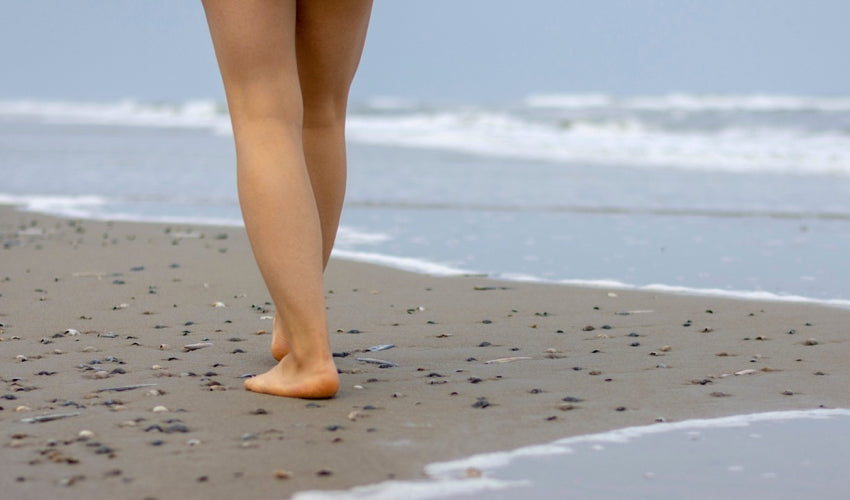
Foot and toe surgeries, though invasive and unnecessary in many cases, can indeed yield positive outcomes if the proper post-surgical recovery techniques are adopted and practiced with consistency and diligence. The natural, non-invasive recovery methods described in this article are for people who have moved beyond the initial phase of their recovery; that is, after the pain, inflammation, and temporary immobility associated with the surgery has subsided or run its course.
The body needs to recover on its own for a short while before many of these strategies can be successfully employed. But a person who has undergone foot or toe surgery should also not wait too long before incorporating these strategies into his or her post-surgical foot care routine. Incorporating these approaches at the right time is important in avoiding long-term complications and problems associated with immobility, scar tissue, etc.
If you have any questions about post-surgical natural foot care techniques, please schedule an appointment with a naturally-minded foot care professional in your area. You might also consider scheduling a remote consultation with the team at Northwest Foot & Ankle in Portland, OR. This is the sports podiatry clinic of Dr. Ray McClanahan, the inventor of Correct Toes.
For those of you to whom this article applies, we at Natural Footgear wish you a speedy and complete recovery from your foot or toe surgery as well as a lifetime of excellent foot health!
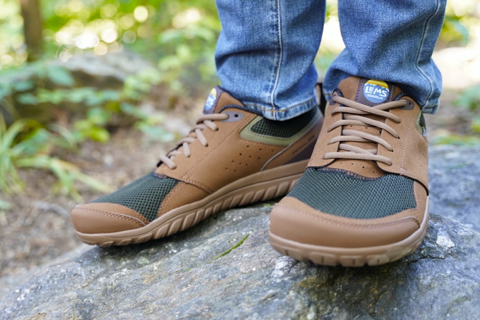 Attention and time given to natural foot health concepts and activities can yield profound foot health benefits, both for foot injury prevention and improved quality of life. Caring for your feet and allowing them to function the way nature intended can keep you pain-free and performing the activities you love most. In most cases, the answer to long-term foot health is simple and involves removing the impediments to optimal foot...
Read more
Attention and time given to natural foot health concepts and activities can yield profound foot health benefits, both for foot injury prevention and improved quality of life. Caring for your feet and allowing them to function the way nature intended can keep you pain-free and performing the activities you love most. In most cases, the answer to long-term foot health is simple and involves removing the impediments to optimal foot...
Read more

















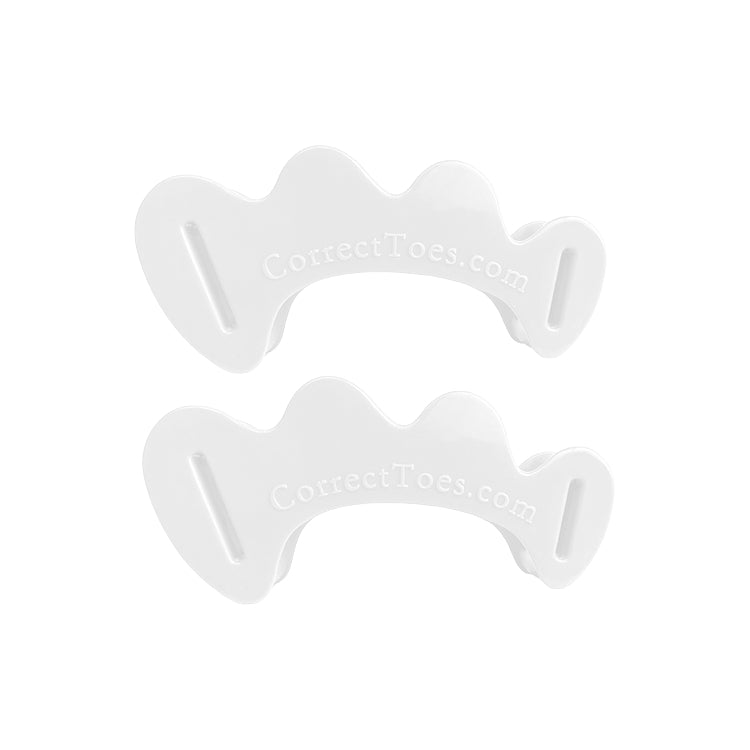
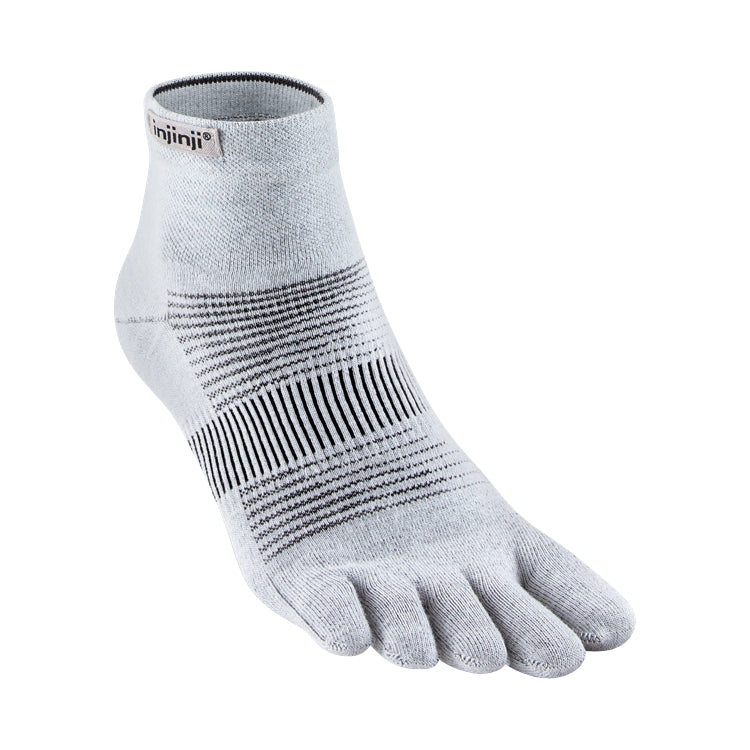
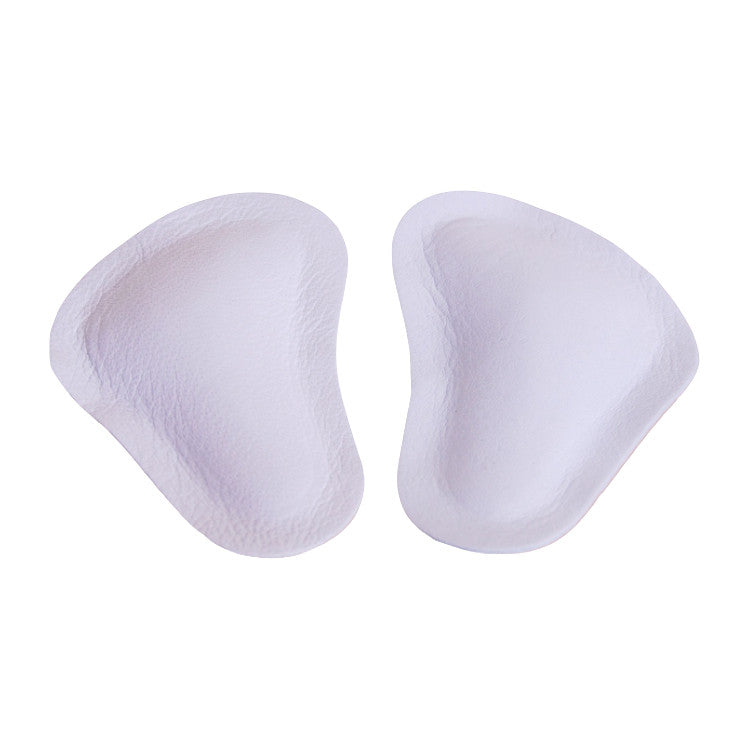
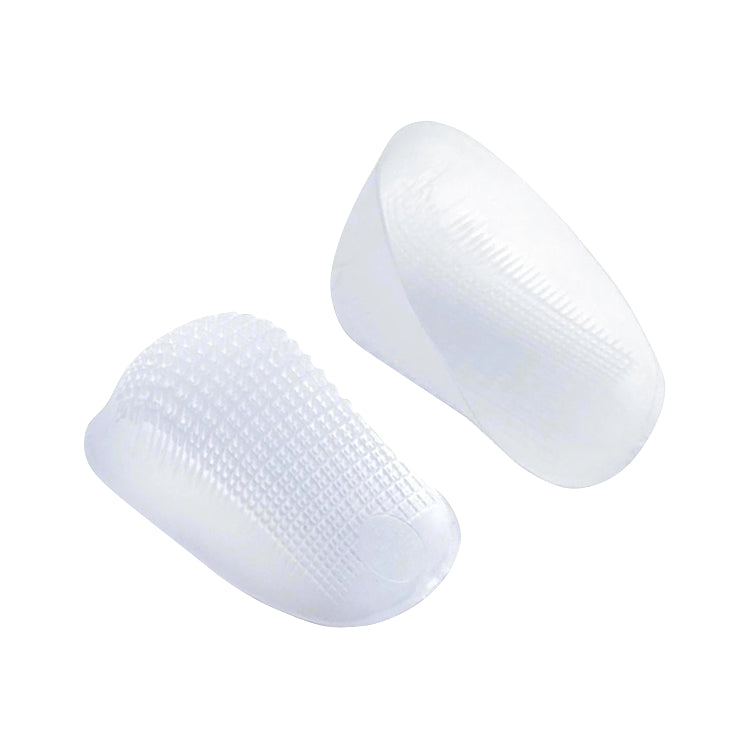

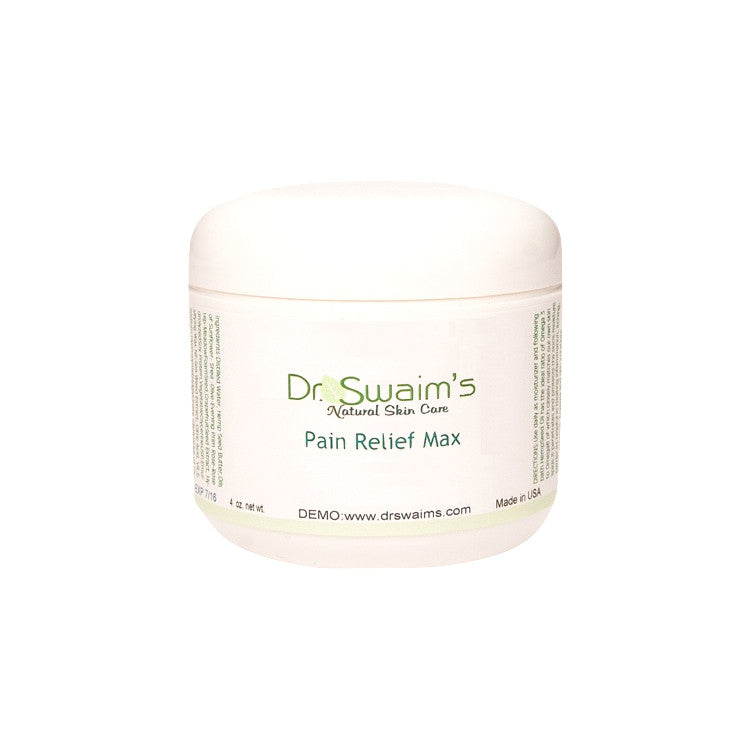
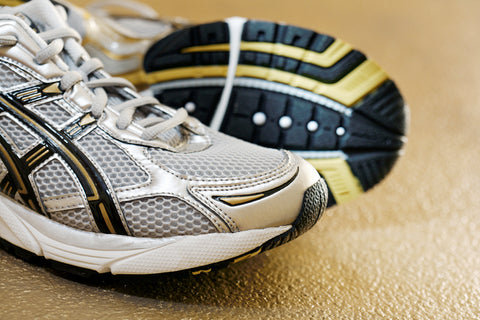

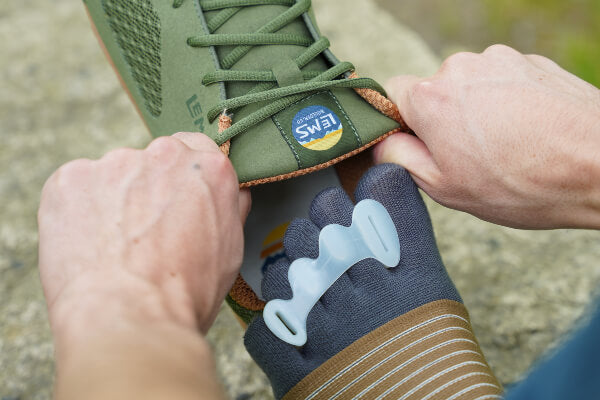
Hello!
I’m looking for help. I have had foot pain all my life. As a child I was always getting prescription orthotics and have had ongoing pain since then. In 2014 I got sick of the pain and had reconstructive foot surgery. I’m hopeful for a good long-term outcome. I went through a physical therapy program and then had a second surgery on the opposite foot. Now I have a hard time keeping shoes on because they are oddly uncomfortable, and some socks are uncomfortable as well. It’s like, after surgery, my feet and ankles got bigger (though they appear to be the same size). I think it’s something with my nerves, too, because a lot of other people with flat feet don’t have this pain, especially after surgery. What can I do? Any ideas on a doctor I could see? I just want to be normal. I want to walk down a street without pain. Please, I’m running out of hope.
Hi, Alaina,
Thank you for your comment. We’re so sorry to hear that you’ve been experiencing the post-surgical issues you mentioned.
There are a lot of practitioners around the country who have at least some familiarity with natural foot health concepts and approaches. Depending on where you live, you may be able to find someone close by. Please check out this link to see if there is a practitioner in your area:
www.nwfootankle.com/resources/122-healthcare-providers
If there’s no one near you, you might consider doing a remote consultation with the team at Northwest Foot & Ankle in Portland, OR (this is the podiatry clinic of Dr. Ray McClanahan, the inventor of Correct Toes):
www.nwfootankle.com/scheduler
If you have any other questions, please do let us know; we’re happy to help out however we can!
Kind Regards,
Andrew Potter
I just had foot surgery two weeks ago. My doctor informed me that in two weeks I can stop wearing my boot and can wear sneakers. I have no idea what I should purchase as I will be returning to work in two weeks. Can you advise what shoes I should buy? Thanks.
Hi, Mildred,
Thank you for your comment. One model that a lot of folks have found to be particularly comfortable is the Lems Primal 2:
www.naturalfootgear.com/collections/womens-lems-primal-2-shoes
Most people find this shoe to be a good starting point when searching for foot-healthy footwear.
If you have any other questions, please do let me know!
Kind regards,
Marty Hughes, DC
Hi! I’m 5-weeks post (minimally-invasive) cheilectomy surgery and am still experiencing joint pain. My follow-up advice was severely lacking, so I’ve been relying on Dr. Google. Up until my toe pain rendered walking any distance too painful for my toe, and subsequently my back, I used to regularly walk 12-20 km with no problem. Still having pain when walking is making me feel quite depressed. My surgeon suggested sticking with rigid-soled shoes, and in fact, my walking boots of choice are rigid because they are the only thing I can walk in for any kind of distance. However, I’ve always been a Vibram FiveFingers fan and was wondering if going back to using those for longish walks would aid my recovery? I’d rather build up my foot strength naturally if possible. Sorry for the essay! :)
Hi, Wendy,
Thank you for your reaching out to us with your comment and question. For a lot of folks, wearing Vibram FiveFingers is a good way to build up foot strength and resiliency, but it’s important to make this transition gently and gradually. As you know, FiveFingers are among the most minimalist of all shoes, and so jumping right into using them—especially after a foot surgery—is usually not recommended without first going through a sufficiently long transition phase. If you do find that you can tolerate FiveFingers at this point in your recovery, please do consider starting with perhaps just 20-30 minutes of wear-time per day initially and then building up wear-time slowly over the subsequent weeks and months, to tolerance.
Please do let us know if you have any additional questions!
Kind regards,
Marty Hughes, DC
Thank you for these tips for restoring foot health after surgery. I’m glad that you mentioned to pick the right footwear for foot and toe rehabilitation.
Thank you for your comment, Taylor! We’re glad you enjoyed the article.
All best,
Marty Hughes, DC
About a year ago, I had foot surgery to address two bunions and four hammertoes. The surgeon refused to give a prescription for physical therapy. After 5 months, I went for a second opinion. I have now been in physical therapy for 2 months, but the scar tissue is not breaking up. I cannot bend my toes, and I am in pain. Any ideas? Thank you.
Hi, Joanne,
Thank you for your comment. I’m very sorry to hear about the scar tissue and the pain that you’re experiencing. I recommend that you review the following article from our site to get a sense of the various natural approaches you can try to assist in your foot rehabilitation:
www.naturalfootgear.com/blogs/educational-articles/10-best-natural-foot-health-tools-tips
Please let us know if you have any follow-up questions that we might be able to assist with.
All the best,
Marty Hughes, DC
This is the first article I’ve read where I actually felt some hope. I’m going on month 9 since surgery. I still have some swelling and the sensation that there is something in my shoe. I’m very limited in terms of what shoes I can wear, and it’s painful to walk. I still am fearful of nerve damage. Is there an intense rehab routine I can follow?
Hi, Warren,
Thank you for your comment! I’m glad to hear that this article has given you some hope. My best recommendation would be to seek out a talented physical therapist in your area to assist you in crafting a personalized rehabilitation routine. In the meantime, you might consider reviewing this article from our site, which discusses some of the top tools and techniques you can use to help build a stronger and more resilient foot:
www.naturalfootgear.com/blogs/educational-articles/10-best-natural-foot-health-tools-tips
Please let us know if you have any other questions for us!
Kind regards,
Marty Hughes, DC
I had surgery for Morton’s neuroma three and a half months ago, and I am still suffering from scar tissue. I am using massage cream daily and performing normal exercise. It seems to do better with regular activity. I cannot seem to break up the scar tissue. What do you suggest?
Hi, Debbie,
Thank you for your comment. I’m sorry to hear about that scar tissue! A good physical therapist, chiropractor, or massage therapist should be able to assist you in dealing with that. There are a lot of manual techniques designed to address this very problem that you could be benefitting from, so I encourage you to assess the field of providers in your area to find one who can help you resolve this issue.
Kind regards,
Marty Hughes, DC
I had tarsal tunnel surgery 2 weeks ago. It was the third one on the same foot. The first one was minimally invasive and did nothing. For the second one, the surgeon did not explore all branches correctly. With the third one, the surgeon found a very large amount of scar tissue, which he said he took care of. However, my toes and the ball of my foot are still numb, tingly, and stiff. Any input?
Hi, Karen,
Thank you for your comment. It can definitely take some time after foot surgery to get a clear sense of any ramifications that may have resulted from it. So, at only 2 weeks out, it may be too soon to tell what you can expect (in terms of lingering issues) over the long term. Once the swelling and inflammation fully subside, you’ll be in a better position to know where you’re at with that. In the meantime, and if the problems persist, you might consider reaching out to a local foot care provider in your area to get the most personalized care possible.
Here’s wishing you speedy healing!
All the best,
Marty Hughes, DC
Hello! I had an operation on my left ankle due to insertional Achilles tendinopathy two years ago. I have the same problem in my right Achilles, but I really want to avoid surgery. Do you recommend barefoot shoes for this issue? I do walk my dogs an hour a day and never seem to find decent footwear. Many thanks.
Hi, Helen,
Thank you for reaching out. It sounds like you’re working hard to manage your Achilles tendinopathy. Minimalist shoes might help with this issue, but you’ll need to approach them gradually, especially after surgery. Shoes without a heel-to-toe drop, like Lems or Xero, could be beneficial in providing a more natural foot position while walking, but be sure to introduce them slowly to avoid overloading your Achilles. It’s important to make sure your transition to minimalist shoes doesn’t stress the tendon too much, and you might consider incorporating appropriate stretching and strengthening exercises—prescribed by a foot care professional—specific to the Achilles.
Kind regards,
Marty Hughes, DC
In this article, you mention that there is a window of opportunity to get proper toe alignment after surgery. Could you tell me what this window of time is? I had bunion surgery on both feet that was performed by an orthopedic surgeon who has been not-so-great for postoperative help and who didn’t give me instructions on what to do after surgery. I kept rolled-up gauze in between my big toes and second toes for a while, but that caused terrible pain, so I started using silicone spacers I purchased from the drugstore. Unfortunately, I have to take them out halfway through the day, as they are irritating me now too. Is it too late for Correct Toes to help me now? My big toes have already migrated back inward toward the other toes, and I’m so discouraged. I would so very much appreciate any advice you can give, as I’ve been left flapping in the wind on my own, not knowing what to do. I am so happy to have found your site with so much information and products on it. Thank you.
Hi, Gail,
Thank you for your comment. I’m so sorry to hear about your struggles post-surgery, and I completely understand your discouragement. The “window of opportunity” for toe alignment after bunion surgery generally occurs within the first 3-6 months, as the soft tissues (like ligaments and tendons) are still adjusting. Even though your toes have migrated inward, it may not be too late for Correct Toes to help—many people have seen improvement even years after surgery. However, be sure to start slowly and pay attention to any discomfort. Gradually incorporating Correct Toes into your foot care routine can still help improve alignment over time, as long as you’re in shoes with a toe box that’s wide enough to support optimal toe splay. It might also help to explore gentle stretches and exercises that target the toe and foot muscles, such as the Big Toe Stretch and Toe Extensor Stretch:
www.naturalfootgear.com/blogs/educational-articles/big-toe-stretch
www.naturalfootgear.com/blogs/educational-articles/toe-extensor-stretch
I hope you find the relief you need soon!
All the best,
Marty Hughes, DC